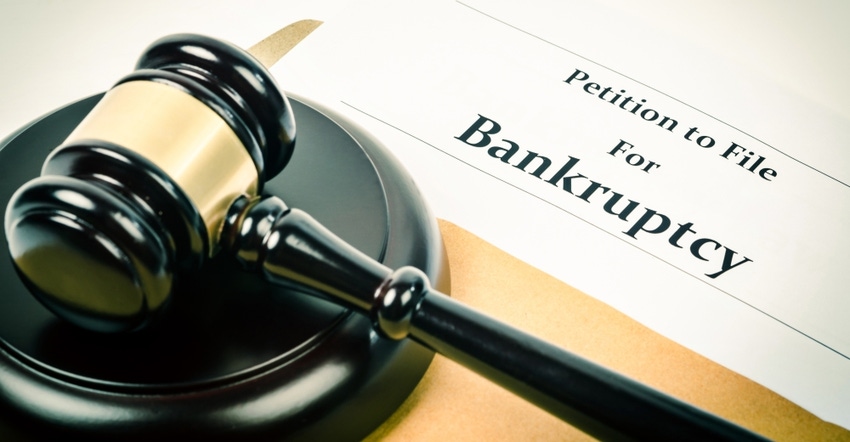Finding out that one of your self-storage tenants has filed for bankruptcy can be jarring and confusing. What do you do? The law in this area can be complex, and as a creditor, there are many rules you must follow. Consider this guidance to protect your business.

Being a self-storage operator, it’s important that you take all necessary steps to protect your business from liability. This is especially true if you learn one of your tenants has filed for bankruptcy. You must ensure you aren’t violating bankruptcy law, so you can collect whatever money you’re owed. Following are some basics you should know and steps to take.
The Basics of Bankruptcy
Individuals and business owners are likely to file for either Chapter 7 bankruptcy or Chapter 11, which is mainly for commercial enterprises. When a Chapter 7 is filed, the court appoints a trustee, which liquidates all the debtor’s available assets so creditors can be paid. In the case of a Chapter 11, the debtor retains ownership of their company and can keep the business open. The goal here is to pay creditors more than they’d receive if the assets were liquidated. If the business still fails to thrive, the Chapter 11 can be converted to Chapter 7.
There are different types of bankruptcy claims, including pre- and post-petition. Pre-petition claims are obligations your self-storage renter incurs before declaring bankruptcy. Any self-storage rent that was due before the filing is an “unsecured” claim. This is the last category of claim to receive payment. Even if it does get paid, it’ll almost certainly be at a significant discount.
Post-petition claims are those made after the bankruptcy petition has been filed. If your self-storage tenant continues to occupy the premises after they file, the rent for that period is an “administrative” claim. Your tenant must pay these claims before they pay off anything else, irrespective of the type of bankruptcy they’ve filed. If there isn’t enough money to pay all the administrative claims, then whatever money is available will be shared proportionately between creditors.
Perhaps the most important thing for you to know as a self-storage operator is that when a renter declares bankruptcy, all collection efforts must be halted. This includes unauthorized evictions or other money-collection methods. An “automatic stay” is triggered, which prevents creditors from taking any action against the debtor without the debtor's consent.
Steps to Take
Below are a few steps you should take when you know your self-storage tenant has filed for bankruptcy. You’ll find ways you can recover what you’re owed and how you can make the space available for rent again.
1. Stop the sale. Once you’ve discovered a tenant has filed for bankruptcy, halt any action against them, including a lien sale. You can’t even send default notices or impose additional charges that accrued through the date of the filing. The automatic stay is in effect, and you may not proceed.
2. Contact the bankruptcy trustee or debtor’s attorney. You’ll find their information on the bankruptcy petition. The point of this first contact is to know your tenant's intention. They might choose to vacate the self-storage unit or stay. If they want to move out, you won’t be able to ask for payments. Instead, you’ll have to file a proof of claim for rent that’s due if there are assets for which rent can be demanded.
Your tenant may ask the bankruptcy court to let them assume the contract in process known as executory contract. If it’s approved, they’ll have to pay rent while the lawsuit is in progress, and they’ll also need to pay any outstanding fees to get out of default. The self-storage operator is given top priority in this case. However, the trustee will reject the agreement if they don’t think keeping the goods in storage will be in the debtor's best interest.
3. Deal with the courts. If your self-storage tenant refuses to move out of your property and doesn’t pay their debt, you'll need to go to court. One of three things can happen:
Relief from stay: As the creditor, you can submit a “request for relief from the stay.” If the judge approves, it enables you to execute your lien rights and seize the tenant’s property.
Turnover: In some cases, you may receive a motion for turnover, ordering you to give over the tenant’s stored property to the bankruptcy trustee. This enables the court to amass the debtor’s assets and distribute them to all creditors.
Abandonment: You can submit a motion to the bankruptcy court to have the trustee abandon the tenant’s property. If you do this, it should show the court that the property is a burden to the debtor and has no value or benefit for them. If the bankruptcy trustee is required or decides to abandon the goods, those belongings can be released to your self-storage facility, and you can then sell them to recuperate money owed. Abandonment allows you to remove the tenant’s property from the unit, making the space available for rent and enabling you to earn revenue again.
Discovering that one of your self-storage tenants has filed for bankruptcy can be stressful. The process can be long and laden with complex rules. It’s critical to understand your rights as a creditor so you can protect your business.
Lyle Solomon is a principal attorney for Oak View Law Group in California. He’s been a member of the California State Bar since 2003 and has extensive legal experience and in-depth knowledge in consumer finance. He graduated from the University of the Pacific McGeorge School of Law in Sacramento, California, in 1998. To reach him, call 800.530.6854.
About the Author(s)
You May Also Like





